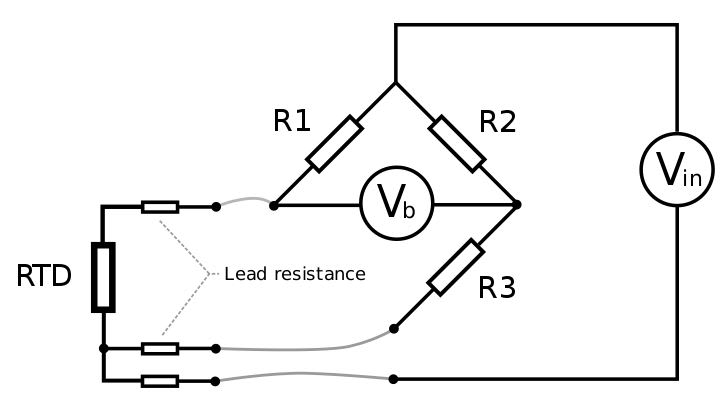Navigation
Install the app
How to install the app on iOS
Follow along with the video below to see how to install our site as a web app on your home screen.
Note: This feature may not be available in some browsers.
More options
Style variation
-
Congratulations cowski on being selected by the Eng-Tips community for having the most helpful posts in the forums last week. Way to Go!
You are using an out of date browser. It may not display this or other websites correctly.
You should upgrade or use an alternative browser.
You should upgrade or use an alternative browser.
4 wire rtd with one wire not connected
- Thread starter Yarno
- Start date
- Status
- Not open for further replies.
- Moderator
- #2
Some circuits use three wires.
The third wire is used to cancel out conductor resistance.
Some circuits use four wires for the same thing, cancelling loop conductor resistance.
Bill
--------------------
Ohm's law
Not just a good idea;
It's the LAW!
The third wire is used to cancel out conductor resistance.
Some circuits use four wires for the same thing, cancelling loop conductor resistance.
Bill
--------------------
Ohm's law
Not just a good idea;
It's the LAW!
4-wire Kelvin connection is the gold standard for eliminating resistive parasitics from the measurement. 2-wire basically sucks for low-resistance measurements, since contact resistance is often on the order of 0.5 ohm. 3-wire is kind of a compromise, often because someone got lazy in running the 4th wire, or couldn't because of an existing layout.
TTFN (ta ta for now)
I can do absolutely anything. I'm an expert! faq731-376 forum1529 Entire Forum list
TTFN (ta ta for now)
I can do absolutely anything. I'm an expert! faq731-376 forum1529 Entire Forum list
Read what I wrote in this thread:
thread240-165067
It explains how three wire RTDs are used. Three wire are THE most common version.
Keith Cress
kcress -
thread240-165067
It explains how three wire RTDs are used. Three wire are THE most common version.
Keith Cress
kcress -
- Thread starter
- #5
- Moderator
- #6
A 4-wire configuration is the most precise/accurate, particularly if the RTD or whatever resistor isn't soldered in place, i.e., a switching network or clips are used; the 4th wire allows the parasitic resistances on both sides of the resistor to be eliminated from the measurement
TTFN (ta ta for now)
I can do absolutely anything. I'm an expert! faq731-376 forum1529 Entire Forum list
TTFN (ta ta for now)
I can do absolutely anything. I'm an expert! faq731-376 forum1529 Entire Forum list
I suspect that if you re-draw your diagram you'll find that the unlabeled R's and R3 form a classic bridge circuit for a 3-wire RTD; and Rd1, Rd2 and Rd4 being the lead resistance.
Compare to the 3-wire RTD circuit from Wikipedia (of all places):

Compare to the 3-wire RTD circuit from Wikipedia (of all places):

- Status
- Not open for further replies.
Similar threads
- Replies
- 0
- Views
- 2K
- Replies
- 4
- Views
- 4K
- Replies
- 2
- Views
- 2K
- Locked
- Question
- Replies
- 0
- Views
- 2K
- Locked
- Question
- Replies
- 1
- Views
- 275

